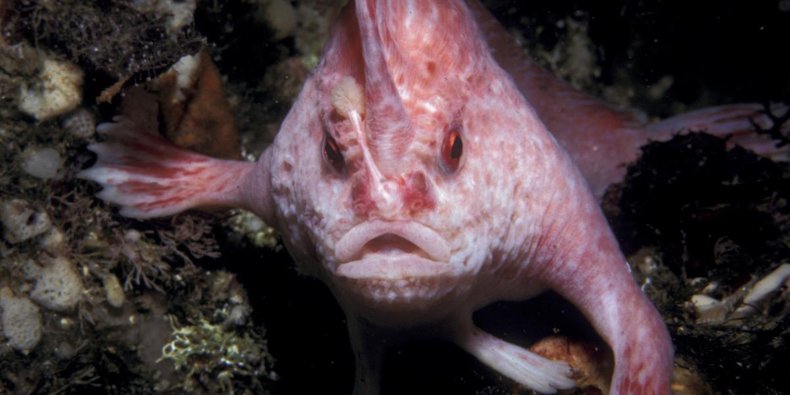An extremely rare pink handfish has been filmed off the coast of Tasmania, Australia, in the first sighting of the species for more than 20 years.
The footage was taken during a survey of the Tasman Fracture Marine Park, off Tasmania's southwest coast, by Parks Australia and the University of Tasmania,
Associate Professor Neville Barrett, one of the marine biologists leading the expedition, said undertaking surveys is a "fantastic" way of understanding which species are living in the region, and getting an idea of which animals are common and rare "in these remote and inhospitable environments."
"The biggest surprise was in finding a pink handfish in the park at a depth of around 120 metres [390 feet]," he said in a statement. "Until this sighting, the species had only ever been recorded four times and was listed as a rare species under Tasmania's Threatened Species Act earlier this year."
Researchers spotted the pink handfish, Brachiopsilus dianthus, while analyzing footage from a remote, underwater video used during the survey. The last time this species of fish was seen was by a diver off the coast of the Tasman Peninsula 22 years ago.
The Tasman Fracture Marine Park is a protected area of ocean spanning over 16,400 square miles, extending far into the Southern Ocean. Its deepest point is almost 20,000 feet and it's scored with steep canyons, troughs, seamounds and basins. Deep water corals are found along these features, providing homes to a huge range of fish and marine invertebrates.
In the video, the pink handfish can be seen to the right of the screen and is partially blocked by some seaweed. It was attracted by the baited camera, which two rock lobsters are fighting over. After a third lobster enters the mix, the pink handfish swims away.
Finding More Unusual Species
"This is an exciting discovery and offers hope for the ongoing survival of pink handfish, as clearly they have a wider habitat and distribution than previously thought," Barrett said.
This survey was the second in a series of expeditions to monitor changes to the water in the shelf, which has been protected since 2007. "The research team looks forward to finding more handfish and other unusual species in this area in the future, as part of ongoing collaborative studies supported by Parks Australia," he said.
"Collaboration is the key to surveying this extraordinary marine park where underwater canyons and mountains hold a remarkable diversity and abundance of marine creatures, most of which are found nowhere else in the world," Jason Mundy, Parks Australia's first assistant secretary, said in a statement.


Post a Comment